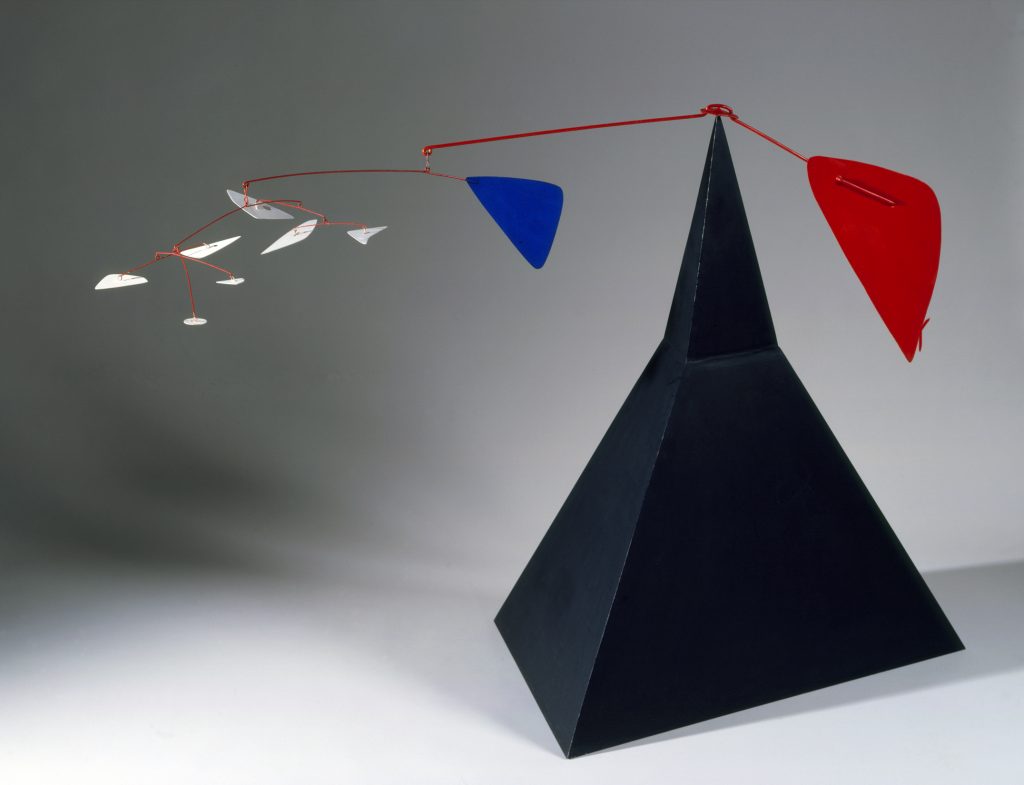Tricolor on Pyramid (work of art)
Información sobre la obra de arte
Acerca de
Alexander Calder is celebrated for developing the mobile as an art form. He combined his interests in nature, abstraction, and motion to create sculptures that perform. While the various sections are capable of pivoting in currents of air, they do not, in fact, normally move inside the Museum. The work suggests more about forces in balance than about movement. Calder said, “My whole theory about art is the disparity that exists between form, masses and movement.” The white, blue, and red sections occupy separate sides of balanced equations. The seven small white pieces are balanced by the mid-sized blue one, and those eight are kept in equilibrium by the one large red piece. The title, Tricolor on Pyramid, may have come to mind from the red, white, and blue tricolor flag of France.
At first the work appears simple, but each piece offers some variation. Most are roughly triangular but with some sides and angles curved, with the exception of one perfect circle. Horizontal white pieces are opposed by vertical blue and red. One piece is pierced by a dime-sized hole, achieving the precise weight necessary to keep the arm balanced.
tags: shapes, science, physics, impact, part/whole, problem solving

